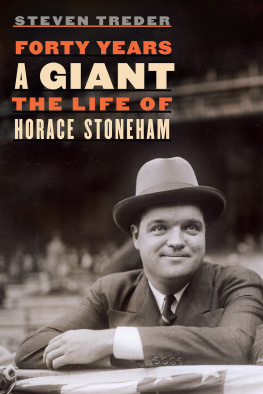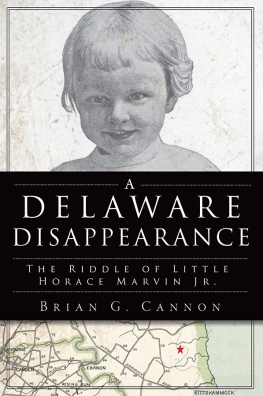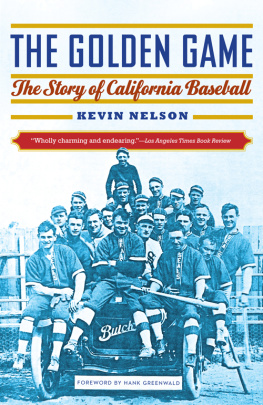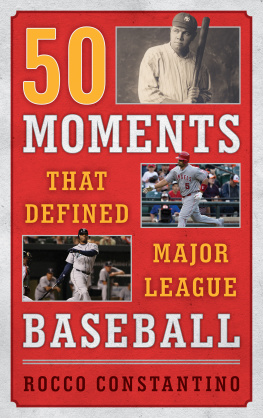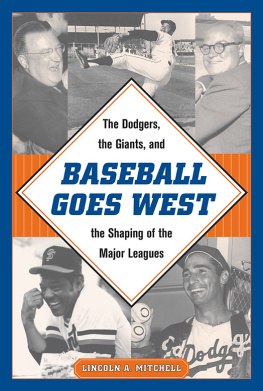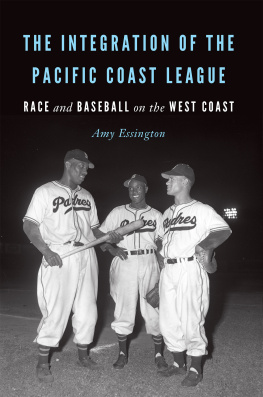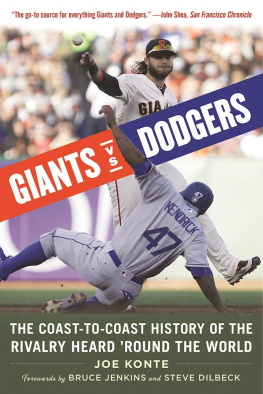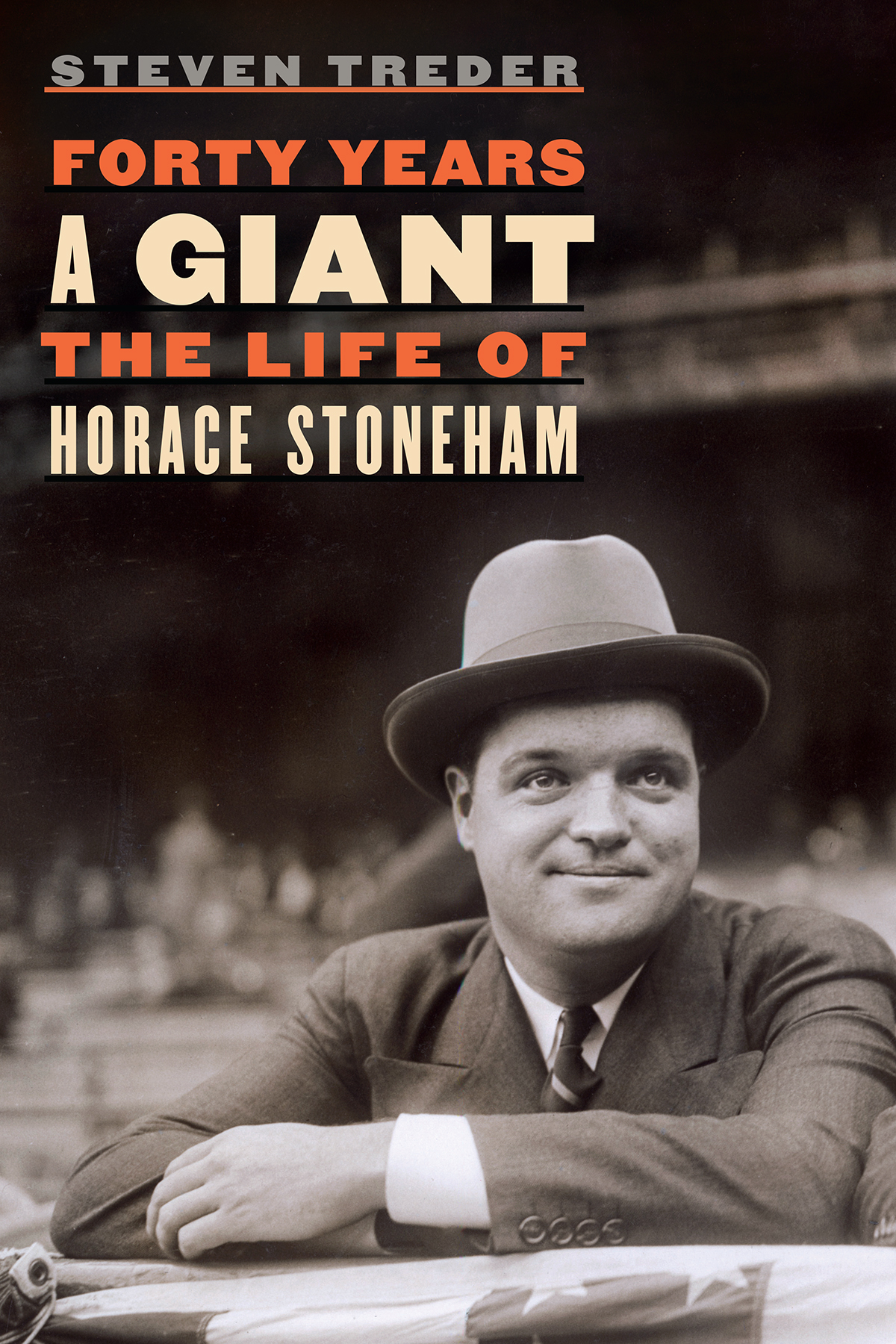
No one better understands the Giants of the mid-twentieth century than Steve Treder, so I knew this was a perfect pairing of author and subject. I was not disappointed. This is an absorbing look at one of baseballs most fascinating teams.
Mark Armour, author of Joe Cronin: A Life in Baseball
Masterful.... This richly contextualized book rescues Stoneham from the sidelines of New York Citys baseball world and places him alongside Walter OMalley in the story of the sports success in California, where he belongs. It is a delight.
Roberta Newman, author of Heres the Pitch: The Amazing, True, New, and Improved Story of Baseball and Advertising
Horace Stoneham [was] a true baseball pioneer.... Giants fans especially will enjoy both Treders thorough narrative of the Stoneham years in New York and in San Franciscothe players, the games, the seasonsand his extensive and balanced portrait of the man most responsible for that history.
Robert F. Garratt, author of Home Team: The Turbulent History of the San Francisco Giants
Horace Stoneham may be one of the most underappreciated baseball executives of the twentieth century. Thanks to Steve Treder we now have a book that recognizes his significance and reflects the Giants prominence in many of the fascinating and consequential moments of more than five decades of baseball history.
Daniel R. Levitt, author of Ed Barrow: The Bulldog Who Built the Yankees First Dynasty
Sometimes you just dont know what you were missing until youve got it. More than players, more than coaches, more than anyone else really, its always been the owners who determine the fates of baseball franchises. Which makes it all the more surprising that Steve Treders outstanding book is the first comprehensive biography of Horace Stoneham, who owned one of baseballs titanic teams through forty years of revolutionary change.
Rob Neyer, author of Casey Awardwinning Power Ball: Anatomy of a Modern Baseball Game
Forty Years a Giant
The Life of Horace Stoneham
Steve Treder
University of Nebraska Press | Lincoln
2021 by Steven Treder
Cover designed by University of Nebraska Press; cover image Detroit Public Library.
All photos courtesy of the Rupert family.
All rights reserved
Library of Congress Cataloging-in-Publication Data
Names: Treder, Steve, author.
Title: Forty years a Giant: the life of Horace Stoneham / Steve Treder.
Other titles: 40 years a Giant
Description: Lincoln: University of Nebraska Press, 2021. | Includes bibliographical references and index.
Identifiers: LCCN 2020041748
ISBN 9781496224194 (Hardback)
ISBN 9781496227232 (ePub)
ISBN 9781496227256 ( PDF )
Subjects: LCSH : Stoneham, Horace, 19031990. | Sports team ownersUnited StatesBiography. | New York Giants (Baseball team)History. | San Francisco Giants (Baseball team)History. | National League of Professional Baseball ClubsHistory. | Major League Baseball (Organization)History. | BaseballNew York (State)New YorkHistory. | BaseballCaliforniaSan FranciscoHistory. | BaseballUnited StatesHistory.
Classification: LCC GV 939. S 7457 T 74 2021 | DDC 796.357/64092 [B]dc23
LC record available at https://lccn.loc.gov/2020041748
The publisher does not have any control over and does not assume any responsibility for author or third-party websites or their content.
Contents
In professional baseball, as in every other sport, the players and field managers (or head coaches)the athletes and their direct supervisorsare the star attractions and fan favorites. No ordinary fan roots for or against a given franchise based on its upper management structure, let alone its owner; indeed, its likely that few fans of any team are interested in the chief executive at the top of that clubs corporate organization chart.
This is entirely sensible and a phenomenon hardly unique to sports. The vast majority of entertainment choices, and consumer purchase decisions generally, are made on the basis of the consumable product itself and not with regard to who might bein a commanding high-backed chair in some lavishly paneled officeultimately accountable for creating it. In baseball the players and the games they play are the product, with the owner only a producer, at the distant end of a long chain of contractual and hierarchical connections.
As fans focus on the game on the field, so do baseball writers and broadcasters in their standard coverage. This has always been true. Thus, the cultural literacy enveloping the sport has always presented ample room for the names, faces, and stirring exploits of celebrity players and star skipperspart of the management regime, of course, but colorfully visible and accessible, right there in the dugout and right there with the media. The players and field managers are the show, after all.
So, once we leave the clubhouse and head upstairs to the front office, fan and media attention quickly diminishes. To be sure, there have been a few famous general managers in historysay, Ed Barrow, Branch Rickey, and George Weissand the modern era has celebrated Billy Beane and perhaps some others like Pat Gillick, John Schuerholz, and Theo Epstein. But theyre the exceptions; most GM s, today and in the past, are dull and forgettable. The same is true of owners: history has highlighted a Bill Veeck here and a George Steinbrenner there, but for the most part fans and writers have been content to grant the occupant of the owners suite little more than a perfunctory glance.
However, to the extent that one endeavors not just to be entertained by professional baseball but to understand it, a better reckoning is required. The easy choice of relegating owners to deep background may be normal, but that doesnt make it a good idea. Failing to examine the teams ownership structures, and the business realities and implications attending to those structures, is to ignore an irreducibly huge factor in determining how this sport we love is presented to us. While the owner himself (and today as in the past, its nearly always a man) may remain obscure, the owners impact pervades everything, for good or ill.
With this in mind, we turn our attention to Horace Stoneham, who presided as owner of the National Leagues Giants from 1936 to 1976. Thats an extremely long time to preside over a baseball team; indeed, its one of the very longest ownership runs in the history of the business. Moreover, that four-decade period through the heart of the twentieth century was percolating with remarkable events and changes, both in professional baseball and in the nation at large: among the issues Stoneham grappled with were the racial integration of the sport and the relocation of his franchise across the breadth of the continent. It is the case that many of the decisions made by Horace Stoneham would have profound effects, both within professional baseball and within the larger communities it inhabited.
And on top of that, Stoneham didnt operate his organization in the manner that had become the norm by the time he came along in the 1930s: that is, hiring a general manager to take responsibility for the baseball operations (including determining the player roster, executing trades and other player transactions, negotiating player contracts, and supervising the farm system), with the owner focusing only on the financial side of the business. When Stonehams GM , Bill Terry, resigned in 1942, he was never replaced; instead, from that point forward, it was Stoneham who served as his own GM . The roster was managed by Stoneham himself. Every trade, every waiver claim, every demotion, and every promotion was his personal decision; every Giants team from the mid-1940s until the mid-1970s was built, or torn apart and rebuilt, by Horace Stoneham himself.
Next page
